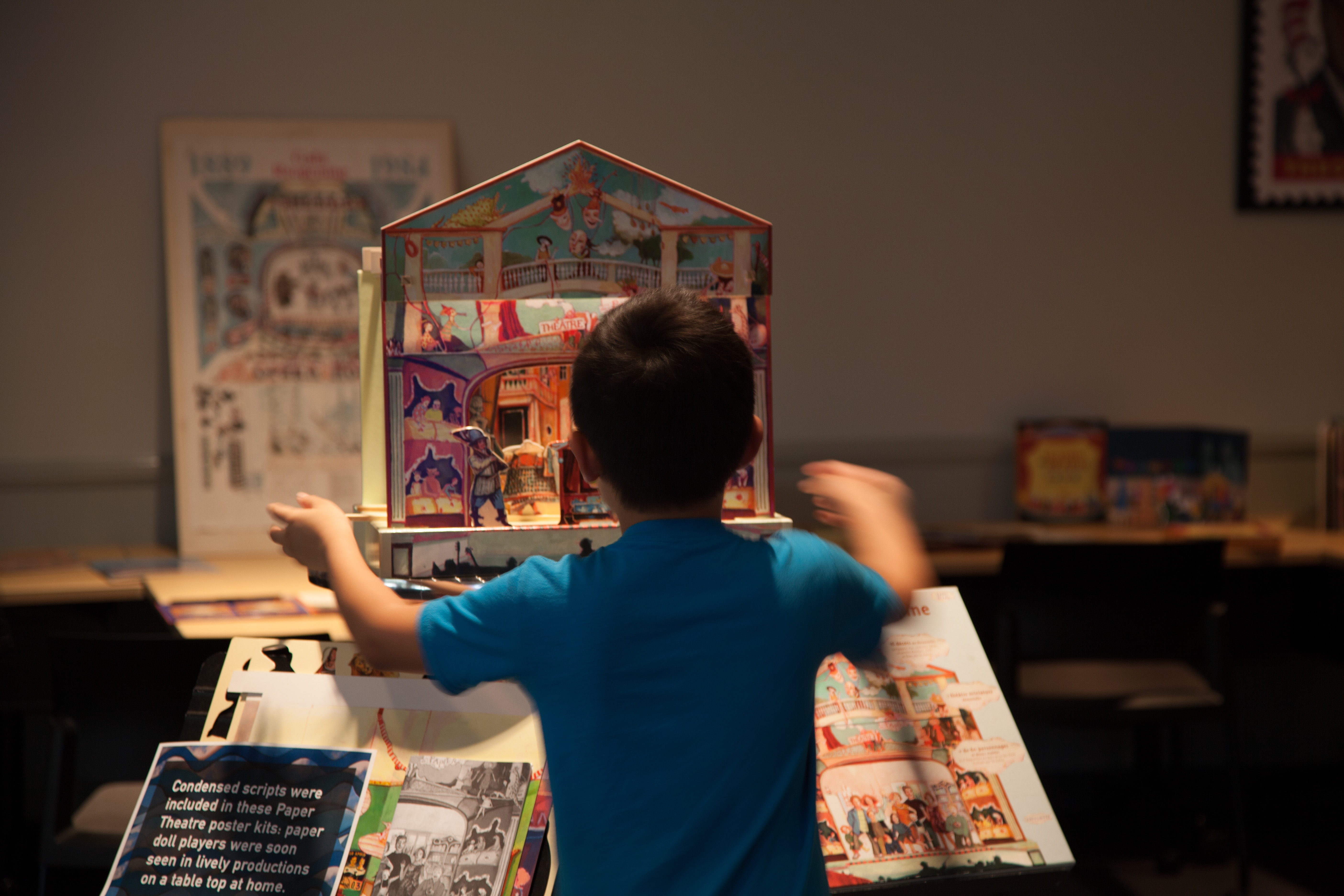Posted On: August 19, 2016
Celebrate the history, wonder and awe of Paper Theatre, a popular Victorian era theatrical souvenir and educational toy, with the UC San Diego Library.
Saturday, August 20 – Sunday, August 21, 2016
Browse from noon – 4:00pm with
impromptu activities & performances
Monday, August 22, 2016
Browse from 10:00am – 1:00pm with
a short, live performance at 12:30pm
Geisel Library, Seuss Room
The 15th Annual Paper Theatre Festival is a family-friendly event with lots of hands-on activities for all ages! Design and color your own paper opticals; turn yourself into a paper doll actor; take part in lively performances featuring live-music, recitations, and manipulations of toy theatres and paper dolls; and browse replicas and re-issues of tiny Victorian Era theatres and modern takes on the toy. View images from the 2015 Paper Theatre Festival.
Best of all, weekend visitors will help produce a new paper theatre play for the collection. For more information, contact Scott Paulson at (858) 822-5758 or spaulson@ucsd.edu.
About Paper Theatre
Paper theatre, also called “Table Top Theatre” or “Toy Theatre”, dates back to the Victorian Era. At that time, theatrical playhouses printed fine souvenir posters showing architectural elements of their theatre. Aspects of set design were shown on the posters along with drawings of actual actors of the company (shown in costume from a specific production). Condensed scripts were included in these poster kits and paper doll players were soon seen in lively productions on a table top at home.
Families and hobbyists would cut out the proscenium, the curtain, etc., to create a scale model of that specific theatre. These paper theatre hobbyists ended up learning much about scenic design, lighting effects, sound effects, music, acting, directing, choreography—all through this paper theatre toy, and many aspects of theatre were introduced to producers and performers of all ages.
Theatre-goers often bought these paper theatre posters as souvenirs promoting an actual production they saw. Those living far from the theatre district ordered paper theatres from a catalog and had them delivered to their small town as an educational toy for the household. A lot of cutting and pasting was involved but hours of educational fun and artistic exploration would follow. The many two-dimensional layers of a paper theatre add up to something with surprising depth and charm.

